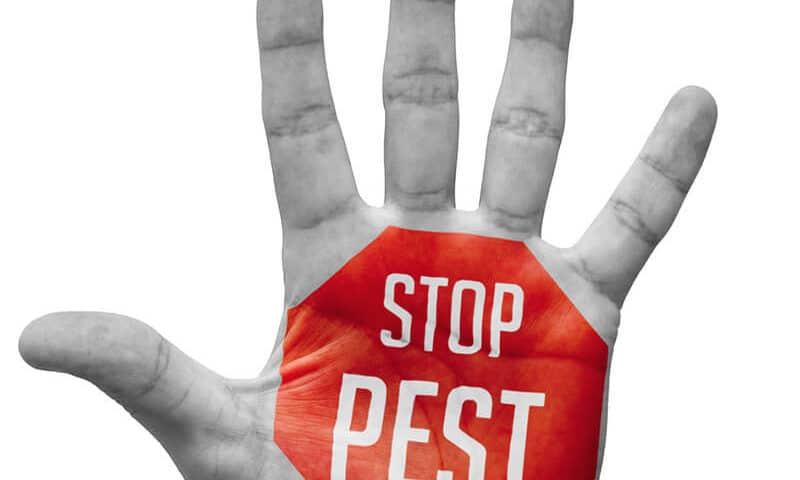The 15-Second Trick For Pestwise
The 15-Second Trick For Pestwise
Blog Article
The Ultimate Guide To Pestwise
Table of ContentsLittle Known Questions About Pestwise.How Pestwise can Save You Time, Stress, and Money.All About PestwiseLittle Known Facts About Pestwise.The Only Guide to PestwiseMore About PestwiseGetting The Pestwise To Work

Q. Define "integrated bug management" (IPM) and list several possible control techniques that may be used in an IPM approach. A. Integrated pest administration is the combining of proper insect control tactics right into a single plan to reduce parasites and their damage to an acceptable level. Insect control techniques may include: host resistance, organic control, cultural control, mechanical control, hygiene, and chemical (pesticide) control.
The Basic Principles Of Pestwise
What can you do to keep the pests you are trying to control from becoming immune to the chemicals you utilize? A. Insect resistance can be decreased by utilizing integrated insect administration and revolving the sorts of pesticides used.
Bugs are a crucial hazard to the farming business, and integrated insect monitoring aids growers address and reduce these dangers. Integrated bug management utilizes several methods in complex, therefore being a much more reliable remedy to the concern. Termite Control. Specifically, getting rid of hostile chemical methods permits for lessening damage to individuals and the environment by utilizing natural and more secure alternatives instead
The Of Pestwise
The objective of incorporated pest management is to decrease this damage and control acceptable problem levels as opposed to eliminate all undesired populations. This is why it is essential to comprehend what steps are justified in each instance and use hostile ones only when various other integrated management techniques do not work. Integrated administration mitigates the adverse repercussions of a non-IPM approach, and the major benefits of IPM Conveniences of IPM.
An appropriate understanding of the problem range identifies if the trouble ought to be resolved. are the following parts of an IPM program since it is vital to recognize if the organisms make possible dangers and pick the integrated administration choices or the details pesticide use. plan to reduce invasions by using different agronomic methods.
How Pestwise can Save You Time, Stress, and Money.
if prevention was inefficient. Integrated monitoring alternatives in an IPM program beginning with safer to a lot more hostile ones. For instance, target or program chemical splashing might adhere to manual elimination or capturing that hasn't aided. Those incorporated management aspects aid understand how to plan and execute an IPM program step by action: Display your crops regularly.

To name a few, IPM cultural methods consist of the adhering to area monitoring strategies: dirt therapy; choice of ideal plants; crop turning; interplanting or strip chopping; option of growing dates; weed control; use trap plants. Desirable dirt problems speed up plant growth, and energetic crops are much more resistant to infestations. Mosquito Control. In incorporated pest management, soil screening helps understand if the field is ideal for the manufacturing of this or that plant, and then apply the lacking nutrients to ensure plant healthy and balanced development
Rumored Buzz on Pestwise
No-till methods assistance prevent dirt erosion, adding to sustainable farming. When tilling is required, it is recommended to conduct it in the fall to subject them to all-natural opponents and extreme weather. Healthy and balanced seedlings and seeds determine effective crop growth, so it is necessary to select pest-free growing material with solid origins.
, which is also used in the integrated insect management system. Alternatively, problems increase when plants of the very same plant type or family members grow together.
, as well as tomatoes. Growing catch plants in patches is another alternative for IPM intercropping. This incorporated insect administration approach recommends drawing in insects to specific plants and after that managing them with chemical or mechanical techniques.
The Best Strategy To Use For Pestwise
Obstacles are normal examples of physical IPM methods. Allow's take a closer consider them. Eliminating or selecting insects out by hand is a time and labor-consuming choice that is widely applied in incorporated management and natural farming. Fully grown insects or their eggs and larvae are accumulated by hand and damaged.

Division of Plant Sciences. This incorporated monitoring approach indicates a common method of damaging insects by predators, parasitoids, microorganisms, and other biological control agents (aka hostile organisms). The role of organic control in IPM is to.
The Definitive Guide for Pestwise
With time, their populace transformed out to be a genuine annoyance to farmers together with native kangaroos or dingoes. The walking stick toad is one more case highlighting incorporated biological control failure in this respect when it rejected to search the target types and became a parasite itself. Parasitoids create on or within their hosts to ultimately kill them after maturing.
Report this page